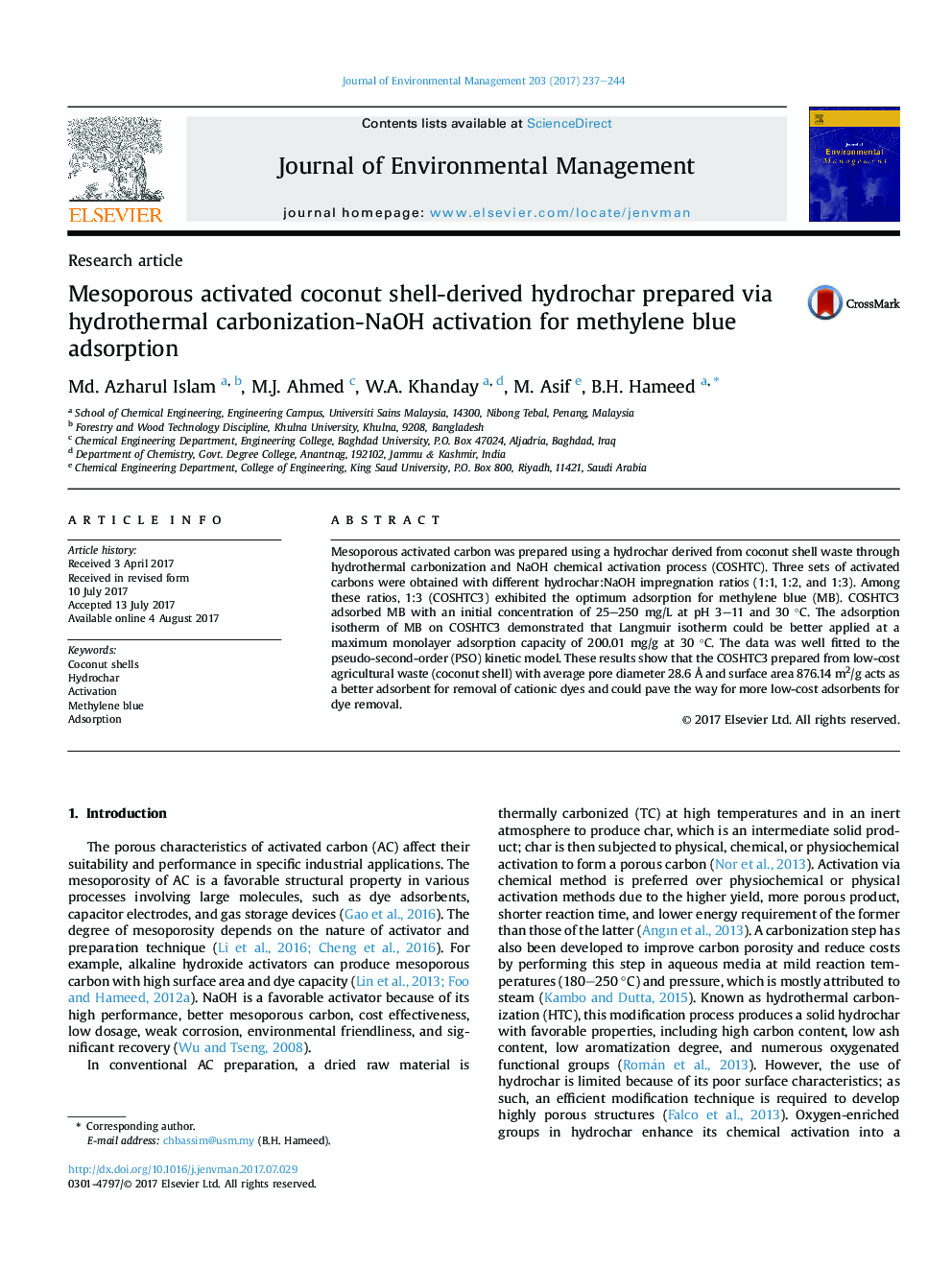| Article ID | Journal | Published Year | Pages | File Type |
|---|---|---|---|---|
| 5116509 | Journal of Environmental Management | 2017 | 8 Pages |
â¢Coconut shells were hydrothermally carbonized to obtain high hydrochar yield.â¢NaOH-activated hydrochar produced mesoporous carbon.â¢The adsorption of MB-polluted solutions by mesoporous carbon was evaluated.â¢The equilibrium and kinetics of the MB-carbon system were determined and analyzed.
Mesoporous activated carbon was prepared using a hydrochar derived from coconut shell waste through hydrothermal carbonization and NaOH chemical activation process (COSHTC). Three sets of activated carbons were obtained with different hydrochar:NaOH impregnation ratios (1:1, 1:2, and 1:3). Among these ratios, 1:3 (COSHTC3) exhibited the optimum adsorption for methylene blue (MB). COSHTC3 adsorbed MB with an initial concentration of 25-250 mg/L at pH 3-11 and 30 °C. The adsorption isotherm of MB on COSHTC3 demonstrated that Langmuir isotherm could be better applied at a maximum monolayer adsorption capacity of 200.01 mg/g at 30 °C. The data was well fitted to the pseudo-second-order (PSO) kinetic model. These results show that the COSHTC3 prepared from low-cost agricultural waste (coconut shell) with average pore diameter 28.6 à and surface area 876.14 m2/g acts as a better adsorbent for removal of cationic dyes and could pave the way for more low-cost adsorbents for dye removal.
Graphical abstractDownload high-res image (365KB)Download full-size image
